Media library
Documentary, graphic and/or audiovisual knowledge objects are offered here, offering information on various sectors and topics. Use the keyword search or search filters to access current audiovisual and documentary knowledge objects useful for your implementation.
If you have any questions or suggestions, please contact us here.
Epidemiological situation of classical swine fever
CSF is a highly contagious disease that affects both domestic and wild swine. It is caused by a virus of the Flaviviridae family, genus Pestivirus, and is characterized by hemorrhagic lesions and is typically fatal in its acute forms, affecting animals of all ages. CSF must be ruled out in any case that presents with hemorrhagic symptoms or nervous symptoms.
African Swine Fever Situation
ASF is a highly contagious disease caused by a virus of the Asfarviridae family, genus Asfivirus. Some strains can cause acute or hyperacute symptoms with mortality and morbidity rates approaching 100%, while other strains cause sub-acute or even chronic clinical symptoms with lower mortality.
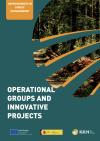
Livestock Breeding. Operational Groups And Innovative Projects
English translation of a compilation of projects developed through the regional and national Rural Development Programmes, operational groups and innovative projects that are working on livestock breeding.
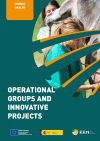
Animal Health. Operational Groups And Innovative Projects
English translation of a compilation of projects developed through regional and national Rural Development Programmes, operational groups and innovative projects that are working on animal health issues.
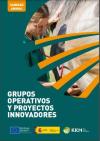
Animal Health. Operational Groups and Innovative Projects
This publication is a compilation of Operational Groups and Innovative Projects in animal health in Spain.
Dossier of supra-autonomous innovation projects
Inventory of innovative projects implemented by supra-regional operational groups of the European Innovation Partnership for agricultural productivity and sustainability of the National Rural Development Programme (PNDR) 2014-2022, submeasure 16.2.
Grups operatius a Catalunya. Call 2018 (Catalan)
The Technical Dossier no. 123: “Grups operatius a Catalunya. Call 2018” is dedicated to the Groups Operatius developed within the framework of the CAP Strategic Plan (PEPAC 2023-2027), and includes the Agricultural Knowledge and Innovation Systems, also linked to AKIS (Agricultural Knowledge and Innovation System).
Operational Groups in Catalonia. Call for 2018
"Technical Dossier No. 123: “Operational groups in Catalonia. Call 2018” is dedicated to the Operational Groups developed within the framework of the CAP Strategic Plan (PEPAC 2023-2027), and taking into account the Agricultural Knowledge and Innovation Systems, also known as AKIS (Agricultural Knowledge and Innovation System).
Report on Spanish supra-autonomous EIP-AGRI projects 2017-2022
The report summarizes the first funding period (2014-2022) of the European Innovation Partnership for Agricultural Productivity and Sustainability (EIP-Agri) operational groups, implemented at supra-autonomous level in Spain.
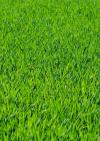
Study on the beef sector in Spain. Calf fattening. SITRAN 2021 data
Analysis of the basic aspects of the productive activity dedicated to calf fattening in Spain as well as its evolution in recent years through the analysis of the information contained in the SITRAN database.
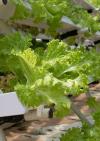
National programme for official hygiene control of primary livestock production
The aim of the Programme is to unify in a single control all those basic aspects that must be taken into account when controlling the hygiene of a livestock farm without entering into other controls that are governed by specific regulations.

National program for the control of veterinary drug and other substance residues (PNIR) in primary production
The purpose of the Program is to carry out official controls in primary production for research on live animals and certain productions for the presence of residues of veterinary medicines and unauthorized or prohibited substances or certain contaminants.
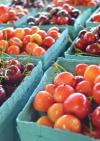
National program for official control of the distribution, prescription and dispensing of veterinary medicines
The objective of the Program is to control veterinary medicines from their distribution by wholesale distributors and contract warehouses, to their prescription and/or eventual administration by private veterinarians and their dispensing or sale.
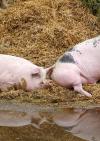
Guide to euthanasia of animals on pig farms
Document that responds to the commitment established in said agreement to develop a standardized work procedure for the slaughter of pigs on farms that includes a review of the reasons that make it advisable to practice euthanasia on animals; management strategies to reduce the need for said practice; systems for stunning and slaughtering pigs on farms and recommendations to producers on said m
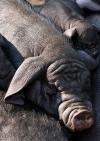
Document on the management of pig farms to prevent tail biting
Document on the management of pig farms to prevent tail biting.
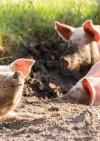
Use of technologies to assess the health, well-being and productivity of livestock (VIGIASAN)
Development and implementation of technologies and innovations in surveillance in pigs and cattle (extrapolable to other species) to monitor changes in different parameters for the control of diseases in livestock.

GO Varroaform. Development of an effective formulation for the control and prevention of varroatosis in domestic bees (Apis melifera).
Development and obtaining of an alternative formulation to conventional pesticides from time-controlled release formulations based on natural products with anti-varroa activity.

GO VACUSOS, Increasing the economic sustainability of cattle fattening on extensive farms with suckler cows.
Increasing the economic sustainability of extensive cattle fattening on extensive suckler cow farms.





